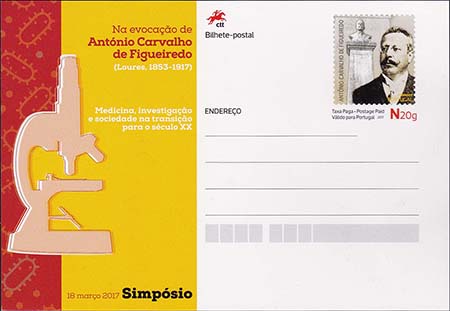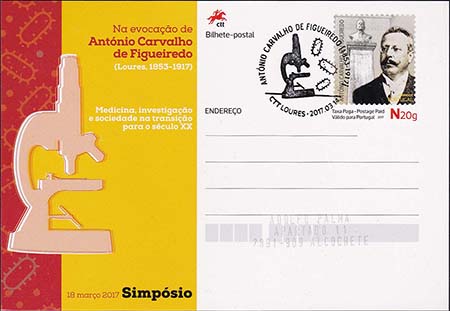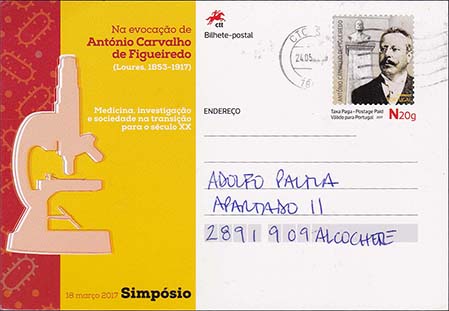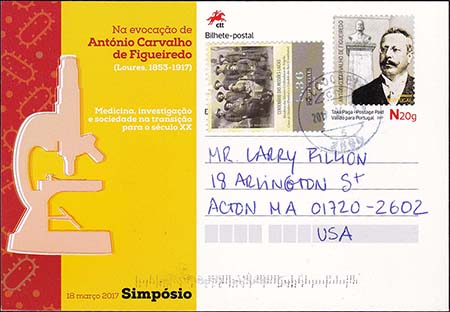2017 Portugal Figueiredo Postal Cards From Portugal
(Published: September, 2017, Volume 17, Number 3, Issue #45) (Table Of Contents)(Author: Larry Fillion)
The Barro is situated on the banks of the floodplain of Loures, whose still and unhealthy waters were causes for the spread of diseases that António C. Figueiredo had to face, study and treat. He promoted the vaccination of children and adults, combated epidemics and developed research on mosquitoes and malaria. Previously he also studied sleep sickness.
The theses of L. Câmara Pestana and António F. Azevedo refer to the works by António C. Figueiredo. In commemoration of the centenary of his death (2017) we will remember António Carvalho De Figueiredo and his contributions to the social progress of Loures and to the Emergence of a new concept of public health, which will accompany the development of the municipality in the 20th century. We now bring some of the first results of this investigation





